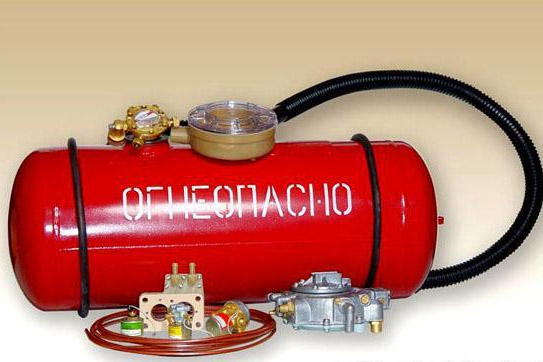 Patented and built by N.A. Otto w 1876 r. the spark ignition four-stroke combustion engine was powered by gas. However, with the spread of motor vehicles, petroleum derivatives dominated the fuel market: gasoline and diesel fuel, generally accessible and easy to store.
Patented and built by N.A. Otto w 1876 r. the spark ignition four-stroke combustion engine was powered by gas. However, with the spread of motor vehicles, petroleum derivatives dominated the fuel market: gasoline and diesel fuel, generally accessible and easy to store.
Gas was remembered during wars and crises, when economic issues and access to resources became important. The current interest in gas installations is largely due to the lower toxicity of the exhaust fumes they emit, and therefore concern for the state of the environment.
TYPES OF GASEOUS FUELS
In practice, several types of gaseous fuels are used. Because they are lighter than petroleum fuels, their collection in an amount sufficient to provide the car with an appropriate range requires compression or liquefaction.
In compressed form, inter alia,:
• natural gas, also known as natural gas, mainly consisting of methane (CH4), also known as CNG (Buy Natural Gas), obtained from natural deposits;
• fermentation gas (biogas), mainly containing methane and carbon monoxide (CO), obtained as a result of the decomposition of organic compounds. Both of these substances are called. primary energy sources, i.e. do not require any chemical or industrial processing prior to application, but only purification.
In liquefied form, inter alia,:
• liquid natural gas, called LNG (Liquefied Natural Gas);
• gas LPG (Liquefied Petroleum Gas), being a mixture of propane (C3H8) and butane (C4 H10), also known under the German name Auto-gas or under the French abbreviation GPL, extracted from the deposits associated with oil and natural gas deposits (m.in. in Canada, Australia, New Zealand, Thailand, Germany and Denmark) Also obtained and processed in the process of refining and cracking crude oil.
Basic features of gaseous fuels:
• low sensitivity to knocking due to high octane number (usually above 100);
• easy to mix with air (especially when the engine is cold), allowing to obtain a homogeneous flammable mixture;
• high combustion rate enabling use in high-speed engines;
• calorific value of the gas-air mixture comparable to the calorific value of a traditional gasoline-air mixture, which in practice means maintaining the engine's performance;
• high auto-ignition temperature, rather restricting its use to gasoline engines, except CNG and biogas, which are also suitable for diesel units;
• lean mixtures can be burned thanks to wide ignition limits;
• low particulate emissions (no smoke), C02, very low content of sulfur and lead compounds and generally lower exhaust mass.
In Poland, LPG installations are most often used.